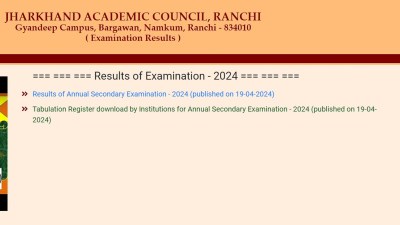- India
- International
Gandhi’s Ashramshala in Bochasan survives changes for over 8 decades
Set up by Mahatma Gandhi in 1931, the Vidyalaya, popularly known as ashramshala is one among eight schools founded and run by the Gujarat Vidyapith, a residential university founded by Gandhi.
 Udeshi Solanki, sanchalak of Gram Seva Kendra, which runs the Vallabh Vidyalaya (Express Photo by Javed Raja)
Udeshi Solanki, sanchalak of Gram Seva Kendra, which runs the Vallabh Vidyalaya (Express Photo by Javed Raja)
Nikunj Solanki, 47, grew up at the Vallabh Vidyalaya, from where he graduated in 1987. After working in private sector for 11 years, he returned to his alma mater to teach in the lower primary section in 2001. Set up by Mahatma Gandhi in 1931, the Vidyalaya, popularly known as ashramshala is one among eight schools founded and run by the Gujarat Vidyapith, a residential university founded by Gandhi.
According to Nikunj, the school has changed a lot. “At that time, children would come from across the state from different communities, cultural and financial backgrounds. There was a bonding between all. There was a sense of pride in the brand name and respect attached to Vallabh Vidyalaya Bochasan,” he says.
 Students attend class. (Express Photo by Javed Raja)
Students attend class. (Express Photo by Javed Raja)
“The hostel was more disciplined then. Despite my house being right next to the hostel, I was staying there with other boys,” says Nikunj. His father, a teacher in the school, used to stay in the staff quarters on the campus.
Bochasan village in Borsad taluka of Anand with a huge NRI population is also where Shastriji Maharaj founded the Bochasan-wasi Shri Akshar Purushottam Swaminarayan Sanstha (BAPS) in 1907, the popular Swaminarayan sect. Gandhi laid the foundation stone of the Vallabh Vidyalaya on May 6, 1931, and was declared open a month later by Morarji Desai.
At Vidyalaya, a boys’ school, a typical day begins at 5.30 am where all the 220 boys from Classes 5 to 12 join for prayer followed by the spinning of the charkha. They clean their hostel campus, including the bathrooms and toilets, from 6.30 to 7.30 am. It is swadhyay (homework) time from 8am to 9am, following which students would bathe and get ready for school.

An early lunch is served at 9.15 am. School begins at 10.30 am to 5.30 pm with three breaks — one at 1.30 pm for snacks and the other two at 10 am and 4.20 pm. Only milk from the gaushala is served to the boys, not tea or coffee. From 5.30 pm till 6.30 pm, students indulge in various games, including cricket, football, kabaddi and volleyball. Dinner is served at 6.30 pm, followed by prayer. From 8 pm till 10 pm is again study time.
School principal in charge, Sunil Jadav, says students are allowed to go home only during five vacations of six days to 35 days in a year. Jadav’s father was also a student at the ashramshala from 1965 to 1969.
Students speak
Shivam Baria, a Class 11 student from Jhalod taluka in Dahod district, completed Class 7 and 8 from Bochasan and went to a private school where he was paying an annual fee of Rs 16,000. “But I returned to Bochasan this year. I did not like the private school, its environment and teaching,” he says.
Vanraj Hathila, a Class 12 student from Dahod, came to Bochasan in Class 6. When asked if he misses home, he says, “I miss my school and friends when I go home during vacations. I feel lonely there.”
There are two other students from his district in his class. They got to know about Bochasan by a villager who works as a librarian at Vidyapith’s another gram Seva Kendra in Kheda district.
Vallabh Vidyalaya might have gone though a transformation but what continues is its legacy and its alumni that is a driving force behind fresh enrollment. Like many other inmates of the Vidyalaya, Vanraj too says that once he leaves Bochasan, he would try to get as many boys from his village enrol at Vallabh Vidyalaya where education is completely free. Sunil Chavda (17), Class XII student, resident of Bamanva village in Khambhat taluka of Anand district who has been at the ashramshala for six years, aspires to complete his graduation and get a government job. “My father says there is nothing better than a government job,” Sunil says.
Few takers
Today, students of the Vidyalaya are restricted to Anand and nearby districts of Kheda, Panchmahal, Vadodara and Ahmedabad. There are a few students from Surendranagar and Bhavnagar as well. The enrolment is mostly from the lower economic strata, predominantly children of farmers and labourers.
The management blames it on the influence of self-financed schools, while Vidyalaya’s alumni who are still associated with the school, say it is the mindest of parents and students. Children just want to study, aiming for a job. “They don’t take pride in learning and doing daily chores, an important lesson of Gandhi’s philosophy of self reliance, the purpose for which the ashramshala was set up,” says Nikunj Solanki.
“The Vallabh Vidyalaya was affected by the wave of self-financed schools and migration to urban areas. With financial empowerment, now people prefer private schools to ashramshala. They prefer uniform with tie and belt over our khadi uniform spun by students themselves,” says Udeshi Solanki (81), sanchalak of Gram Seva Kendra, which runs the Vallabh Vidyalaya.
Solanki, the oldest by age and association with the organisation, came to Bochasan in 1951 when he was 10 years old. After completing his schooling, he returned in 1962 after graduation and has been teaching since then. Solanki now oversees the administration. Nikunj is his son.
Anil Parmar, an alumus, who is also a teacher at Bal Shala, says, “Parents do not want to send their children to such a hostel where there is no furniture and has an old building. Also, children just want to study and are not much interested in the daily chores.”
Udeshibhai recalls the earlier years where the principles of the Vidyalaya was to unite the upper castes and the backward classes “through group work and community life to keep them together at the hostel”. “A bond of brotherhood develops between them, irrespective of their caste, economic conditions and the area they belong to. Today, majority of the students here are from poor families, majority with small land holdings or those working as labourers in others farms,” he says.
Vidyalaya’s history
The Vallabh Vidyalaya was born out of the need for a school for the children who participated in the Salt Satyagraha or the ‘no tax’ campaign in 1930.
Since children of satyagrahis did not have any school to go, Shamalbhai started teaching them various subjects and spinning the charkha. After signing of the Gandhi-Irwin Pact in 1931, the villagers requested to establish a national institute there. This was communicated to the then Gujarat Vidyapith vice-chancellor, Kakasaheb Kalelkar.
Nagindas Amulakhray, a businessman from Ahmedabad donated Rs 1 lakh to Mahatma Gandhi for rural upliftment activities that were looked upon by a committe comprising Sardar Vallabhbhai Patel, Mahadevbhai Desai and Narhari Parikh. Gandhi put this aside for the Vidyapith, which founded the Vidyalaya.
Apr 19: Latest News
- 01
- 02
- 03
- 04
- 05






































